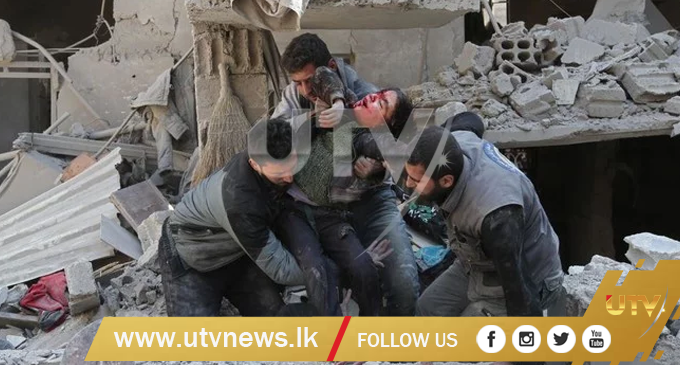UTV | COLOMBO – The UN commission investigating and documenting possible war crimes in Syria omitted several pages of damning evidence, the New York Times has reported.
The newspaper said seven pages of an earlier draft of the report were summarized in two paragraphs of the final UN documents published Wednesday.
The claims made in those pages “paint a far more frightening picture of chemical weapons use in Eastern Ghouta than had been previously reported,” the NYT reported.
The omitted draft pages “assert without qualification that Syrian forces and their allies were responsible,” despite denials by President Bashar Assad’s government and his backers Iran and Russia.
A member of the commission explained that many of the details in the early draft were removed as they needed additional corroboration or clarification, it was reported.
“We thought we need to do some more work on this, it’s an ongoing investigation … So we thought, let’s keep it short,” Hanny Megally, an Egyptian human rights lawyer, was quoted as saying.
But the NYT added that the omitted information seemed unambiguous.
“In one of the most grim patterns of attack documented during the period under review, Government forces and/or affiliated militias continued to use chemical weapons in densely populated civilian areas throughout eastern Ghouta,” the leaked draft stated.
The draft detailed six chemical weapons assaults on civilians from January through April 7, the date of the deadliest assault. In what appeared to be a first, it implicated Iranian-supplied weaponry, the newspaper reported.
“In relation to the munitions used on 22 January and 1 February, the Commission obtained and assessed material evidence including metadata analysis, and identified a surface-to-surface craft-produced rocket (IRAM). While IRAMs have been employed by a range of actors across Syria, the particular design of those observed during these two attacks is only known to have been used by Government forces and rarely, affiliated militias. Specifically, IRAMs documented were built around industrially-produced Iranian artillery rockets known to have been supplied to Syrian Government forces,” the draft report noted.
Thirty-one people, including 11 children, were sickened in the first three attacks, but none died. Two other episodes of possible chlorine use, on Feb. 25 and March 7, caused more extensive casualties, killing two children, including an infant, and injuring 18 civilians.
For the New York Times, the draft revealed more damning evidence against the regime and its allies in its analysis of what happened during the April 7 attacks on eastern Ghouta, when an improvised explosive delivered from the air hit a multi-story residential building close to the Rif Damascus Hospital.
Based on witness statements and “material evidence received and analyzed by the Commission,” the draft said the dead showed “an array of symptoms consistent with exposure to a choking agent, including signs of foaming at the mouth and nose, blue skin indicating impaired blood circulation, meiosis (constriction of the pupils), as well as some cases of dilated (wide open) pupils.”
Megally declined to go into detail over why such information was withheld from the final report published on Wednesday. But he said that with the April 7 attack in particular, more information was needed, including precisely what killed the 49 people.
“If we’re not sure what the cause of death was, we may be looking in the wrong place,” he said. “It’s better we finish the investigation, rather than release it in dribs and drabs.” (Courtesy – Arab News)























